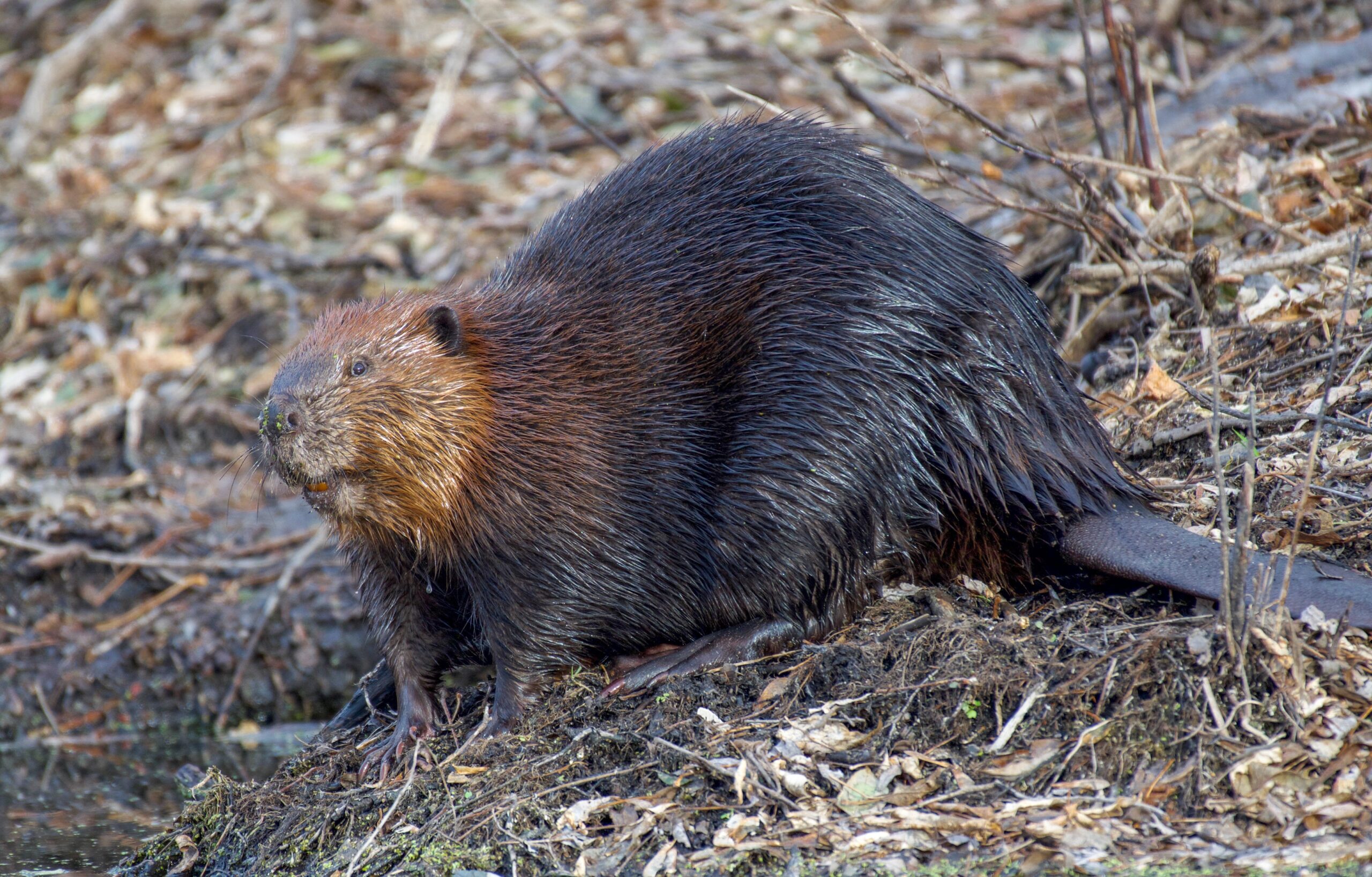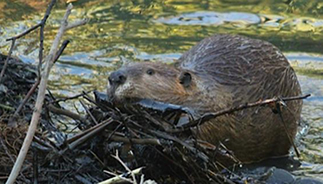
Beaver
Menu
For very good reason, beavers are referred to as both nature’s hydro-engineers and a keystone species. Earning the reputation, busy as a beaver, these highly social animals who live as a family unit are North America’s largest rodent. Awkward on land, beavers build dams and lodges for protection against predators and for access to food in the winter. They create canals to transport the logs. Many say, you cannot out work a beaver. They react to the sound of water by quickly damming it up with branches and mud. Their dams alter, store and slow the flow of water significantly modifying the landscape. Beavers substantially change the physical, chemical, and biological characteristics of the surrounding river ecosystem. They enhance biodiversity providing benefits to plants and animals. Beavers create wetlands in which an estimated 85% of all wildlife are dependent. Sadly, only 2% of the land out west are wetlands.
Beavers are integrally woven into our water resources, pollution, soil composition and retention, water temperature, wildlife habitat, fisheries, big game browse, ranching, farming, tourism, firefighting and climate change. Beaver have earned the distinction, central to all life.
What our country looks like today has changed drastically from the past. With the European settlement, fur trappers pillaged North America’s rivers, slashing beaver populations from more than 60 million to 100,000. Streams, creeks and canals became straight or were lost altogether. The Montana landscape we know was fundamentally changed by the removal of beaver before Montana was even settled. In November 1841 the famous trapper Osborne Russell wrote: “The trappers often remarked to each other as they rode over these lonely plains that it was time for the white man to leave the mountains as beaver and game had nearly disappeared.”

Not until the 20th century did we begin to regard these creatures as more than pelts.
While efforts are underway in many western states to relocate and reintroduce beaver, some, i.e. 6,000 trappers, less than 1% of Montanans, are stuck way in the past and continue to trap and destroy beaver, these incredible ecosystem engineers….worse, it’s legal. Without beaver ponds many of Montana’s creeks shut down, draining aquifers which once stored millions of acre feet of water and supported widespread riparian zones. These are the arid creek sides the first ranches found. These are the arid creek sides we think are natural today.
Beaver management in Montana
- Pre-Settlement: 60-400 Million Individuals
- 1900: beavers were designated as a protected species
- 1941: beavers were listed as a fur bearer but protected
- 1953: beavers had a trapping quota per person based on the # of trappers
- 1970: unlimited trapping was allowed with a per person limit
- 1993 – present: Unlimited trapping with no tagging or limits
